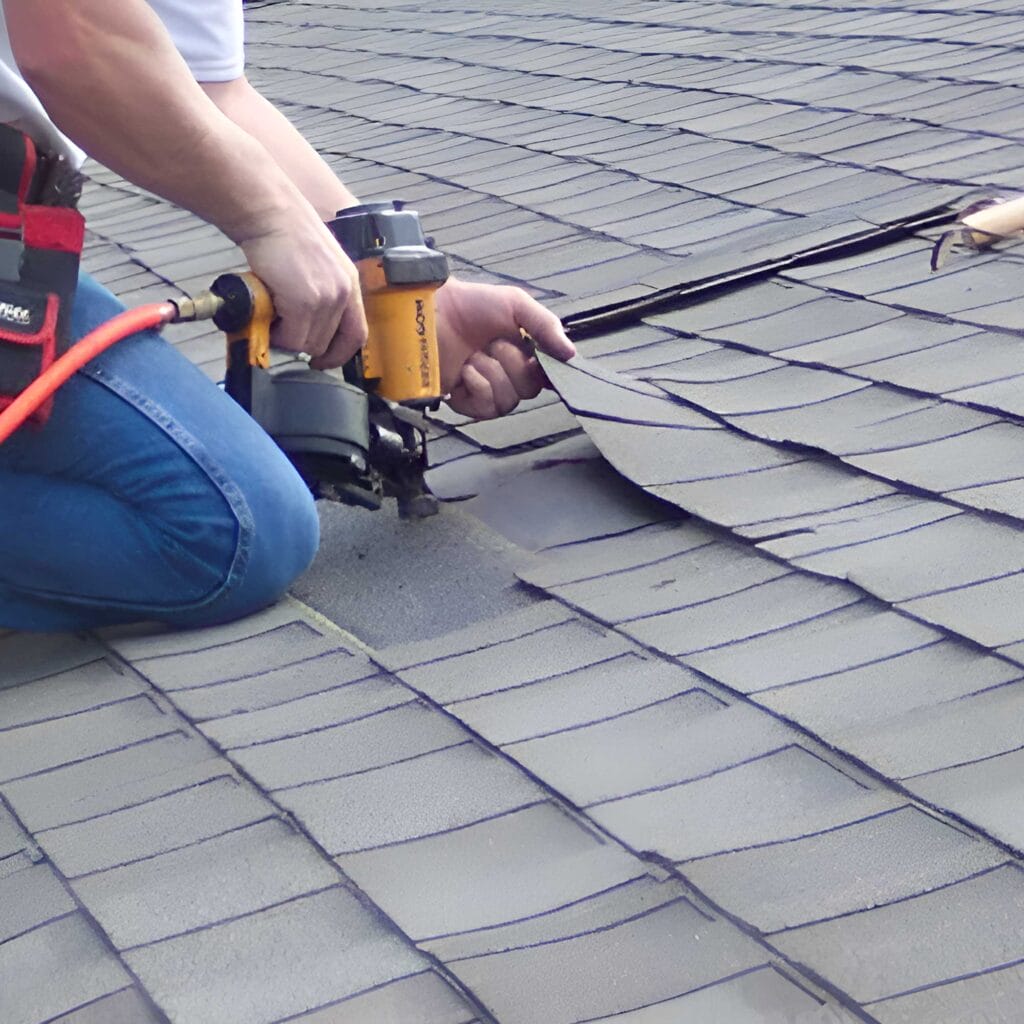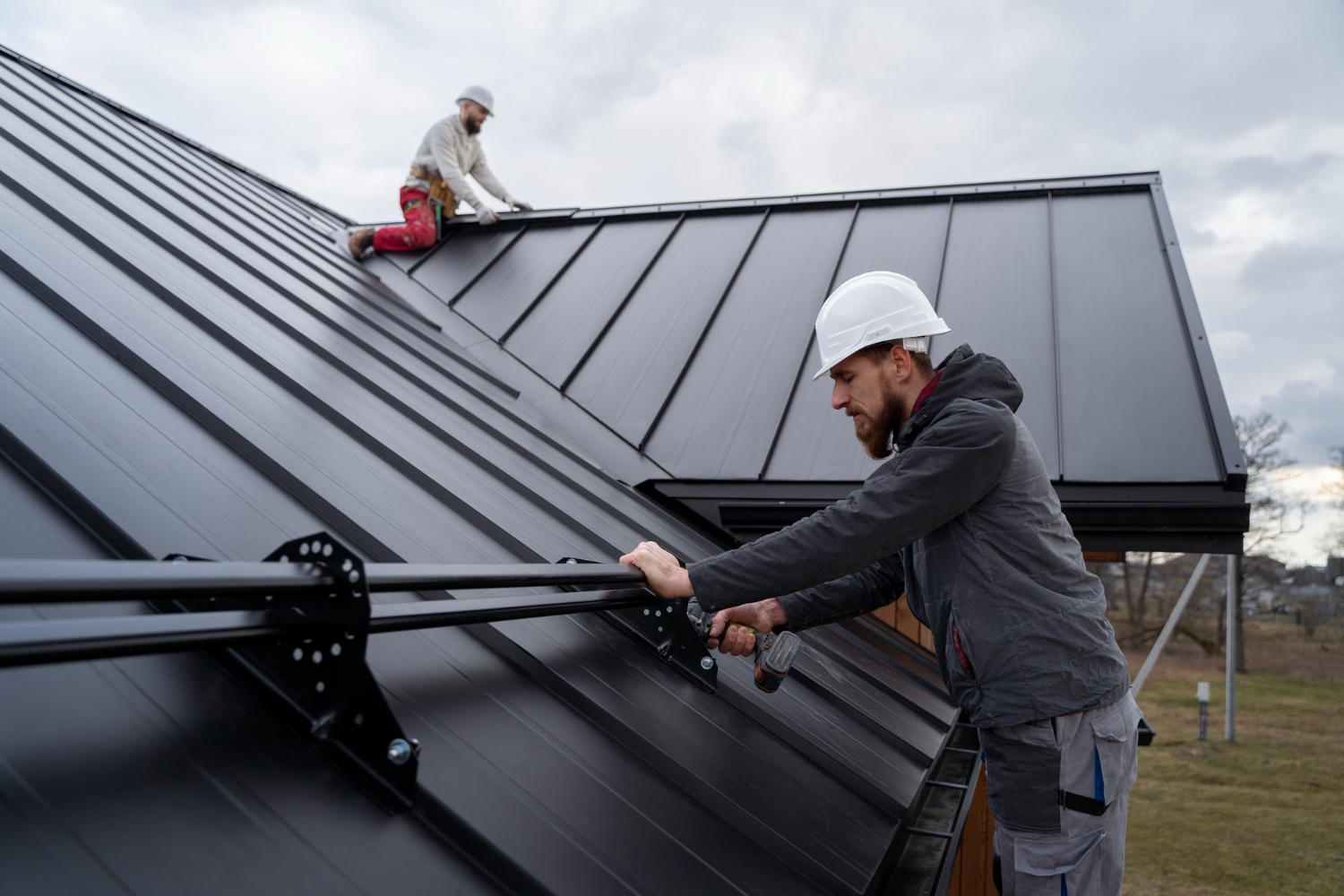A Comprehensive Guide to the Installation Refine for Your New Roof
The setup process for a new roof requires careful consideration of numerous elements. From reviewing the roofing's architectural stability to choosing ideal products, each action plays an essential duty in making certain a successful end result. Comprehending the nuances of installation can prevent future issues and improve sturdiness. What are the vital steps one must comply with to accomplish a trustworthy and resilient roof covering? The response hinges on a methodical method that addresses every essential facet.
Understanding Various Roof Products
When choosing a roofing system, understanding different roof covering materials is essential for making an educated decision. Different materials offer unique benefits and disadvantages, affecting resilience, expense, and aesthetics. Asphalt tiles are popular for their price and ease of setup, making them a common choice for residential properties. Metal roof, recognized for its longevity and resistance to severe weather, interest those seeking longevity. Clay and concrete tiles provide a special aesthetic and outstanding insulation yet can be larger and a lot more expensive. Slate roofing, commemorated for its all-natural charm and exceptional life expectancy, often tends to be a costs alternative needing skilled setup. For environmentally-conscious home owners, environment-friendly roof systems, which integrate plant life, present sustainable advantages. Recognizing these products permits homeowners to align their choice with spending plan, climate considerations, and personal style preferences, inevitably ensuring a roofing service that satisfies their requirements successfully.
Assessing Your Roofing system's Structural Stability

Evaluating a roof covering's architectural integrity is vital for ensuring its longevity and safety and security. This procedure includes checking the roofing structure for any indications of weak point, determining possible water damages, and identifying the load ability to support various roofing products. Addressing these variables will certainly assist preserve the general health and wellness of the roof.
Checking Roof Covering Structure
Before installing a brand-new roofing system, it is crucial to completely inspect the roof covering structure to validate its structural honesty. This process includes evaluating key parts such as rafters, trusses, and the overall structure design. A professional examiner must look for indications of wear, bending, or any architectural deficiencies that might endanger the new roof installment. Furthermore, it is vital to examine for proper tons circulation, ensuring that the framework can sustain the weight of the new materials. Any type of recognized problems must be addressed before proceeding, as they can cause significant issues down the line. By prioritizing this inspection, property owners can ensure a sturdy and dependable roof that will certainly stand up to the test of time.
Identifying Water Damage
Water damages can considerably impact a roof's structural stability, making it essential to identify any type of indicators early in the evaluation process. Property owners must seek discoloration or discolorations on ceilings and walls, which may show leakages. Sagging areas in the roofing system or ceilings suggest accumulated moisture that could compromise structural parts. Inspecting the attic is very important; mold growth and damp insulation are indicators of water breach. Furthermore, checking out the roofing surface area for missing shingles, splits, or rust on metal parts can disclose prospective vulnerability to water damages. Normal evaluations can help in early discovery, permitting timely repair services that protect the roof's honesty and stop comprehensive damage. Addressing these indicators immediately is vital for maintaining a safe and sturdy roof.
Examining Tons Capacity
Reviewing the tons ability of a roofing is important for guaranteeing its architectural integrity and durability. This evaluation includes examining the products used in the roofing system's building, the underlying framework, and the overall layout. Aspects such as snow buildup, wind lots, and the weight of roofing materials need to be taken into consideration to establish whether the framework can support additional tons. An architectural designer can offer beneficial understandings, conducting computations based upon local building ordinance and environmental conditions. Normal inspections and maintenance additionally play an important duty in determining prospective weak points. By thoroughly assessing load capacity, property owners can stop pricey problems and make certain that their brand-new roofing system is safe and long lasting for years to come.
Planning and Preparing for Setup
Efficient preparation and prep work are important steps before setting up a roof - top rated roofing companies near me. This entails evaluating particular roofing needs and selecting the appropriate materials that best fit those requirements. A complete understanding of these aspects can considerably influence the success and durability of the roof covering job
Examining Your Roof Requirements
How can one guarantee that their roof covering task meets both aesthetic and practical demands? A complete assessment of roof covering requirements is crucial. This entails taking a look at the present roof's condition, recognizing any damages, and determining structural integrity. House owners ought to consider their environment, as climate conditions significantly impact roofing product options and resilience. Furthermore, examining building design and area looks is important for maintaining property value and appeal. Understanding individual choices and budget plan restraints further aids in making educated decisions. Consulting with roof professionals can offer important understandings and recommendations customized to details demands. By diligently reviewing these factors, house owners can guarantee their roofing job straightens with their unique demands and boosts their residential or commercial property's general look.
Selecting the Right Materials
When selecting products for a roof covering job, it is vital to take right into account both capability and aesthetic appeals to ensure a successful installment. Home owners must consider the climate of their area, as specific materials perform far better under particular weather problems. Steel roofs offer resilience in areas prone to hefty snowfall, while asphalt shingles might be a lot more economical for milder climates. Additionally, the style of the home plays a considerable role; materials need to enhance the building design to boost curb charm. Sustainability is an additional element; eco-friendly alternatives like solar floor tiles or redeemed wood can reduce ecological effect. Inevitably, picking the ideal materials entails stabilizing these elements to secure a aesthetically attractive and lasting roof.
Safety Preventative Measures Throughout Setup
Making certain safety during roof setup requires thorough attention to information and adherence to established methods. Firstly, employees need to wear appropriate personal protective devices (PPE), including headgears, gloves, and non-slip footwear, to minimize injury dangers. Scaffolding and ladders have to be securely placed and kept to offer steady work surface areas. It is necessary to inspect the roofing framework for weaknesses or damages before beginning work, as this can protect against crashes in the future.
In addition, installers should be trained in autumn protection approaches, including the use of guardrails and harnesses. Weather conditions additionally play a considerable function; job needs to be postponed during high winds, rainfall, or tornados. All products and tools ought to be arranged and protected to prevent tripping threats. By focusing on these security preventative measures, the risk of mishaps can be significantly lowered, ensuring a safer working atmosphere for all entailed in the roof covering installment process.
Step-by-Step Setup Process
An effective roof system installment includes a collection of very carefully prepared steps that ensure both performance and top quality. Initially, the old roof covering material should be removed, ensuring the underlying structure is undamaged. Next, any type of required repair work to the roof covering deck are performed, reinforcing its security. Following this, a wetness obstacle is installed to protect versus water infiltration. The choice of roof material, such as tiles or steel panels, is then outlined, beginning from the eaves and proceeding upwards. Each piece is secured diligently to stand up to climate condition. Ventilation systems are incorporated to promote air movement and stop moisture build-up. Flashing is installed around chimneys and vents to further guard against leakages. Ultimately, the installation is examined for conformity with local building regulations and maker requirements. This extensive method guarantees a trusted and resilient roof that fulfills house owner assumptions.
Ending Up Touches and Evaluations

Once the installation of all components is complete, a comprehensive evaluation adheres to. This consists of checking for proper alignment, secure attachment, and adequate sealing of joints. Assessors additionally examine ventilation systems to assure peak air flow and dampness administration.
Furthermore, any particles or remaining materials a fantastic read from the installment must be removed from the roofing system and bordering location. By thoroughly addressing these information, home owners can ensure that their new roof is not only functional however also visually appealing, setting the stage for long-term efficiency and toughness.
Upkeep Tips for Your New Roofing system
While many home owners might neglect the value of routine roofing system maintenance, developing a regimen can substantially prolong the lifespan and performance of a brand-new roof covering system. Normal assessments should be performed a minimum of two times a year, ideally in spring and fall, to determine any kind of prospective problems early. Property owners need to inspect for loosened or missing roof shingles, indications of wear, and debris accumulation in seamless gutters and valleys.
Cleaning up the roof surface and seamless gutters is critical to click this stop water damages and mold growth. Furthermore, cutting looming branches can lessen deterioration brought on by dropping particles. It is likewise advisable to keep an eye on indoor ceilings for indicators of leaks or water discolorations, which could suggest roof covering problems.
Involving a specialist for yearly assessments assures that any underlying concerns are resolved immediately, protecting the honesty of the roofing system and offering peace of mind for home owners.

Often Asked Concerns
How Lengthy Does the Roof Covering Installment Process Usually Take?
The roof setup procedure generally takes one to three days, depending upon the job's size and complexity. Elements such as weather condition problems and the sort of roofing material can also influence the overall timeline.
What Permits Are Needed for Roof Installment?
The required authorizations for roof covering installation commonly consist of building permits, architectural permits, and, in some locations, electrical or plumbing authorizations. Rules may differ based on neighborhood codes, demanding examination with local authorities for details demands.
Can I Stay At Home During the Installation?
House owners can stay throughout roofing installation, however it might be troublesome as a result of noise and disruptions. Service providers suggest remaining out of work locations for safety and to enable the crew to execute their tasks effectively.
Will My Insurance Cover the Roof Installment Costs?
Insurance insurance coverage for roofing installment prices varies based on specific policies and circumstances. Home owners should consult their insurance coverage service provider to establish qualification for protection, consisting of factors like damages seriousness and plan terms regarding roof substitute.
What Takes place if It Rains During Setup?
Employees might stop development to stop damages to products and guarantee safety and security if it rains throughout setup. Rain can likewise delay conclusion, needing extra time for drying out and prospective re-evaluation of the roof job.
The installment procedure for a new roof covering system calls for mindful factor to consider of various second hand roof tiles for sale aspects. When choosing a roof system, comprehending different roofing materials is vital for making an informed choice. When picking products for a roof job, it is vital to take right into account both functionality and aesthetics to ensure a successful setup. Making certain safety and security during roof system setup needs meticulous focus to information and adherence to established methods. An effective roof covering system setup involves a series of thoroughly prepared steps that ensure both performance and top quality.